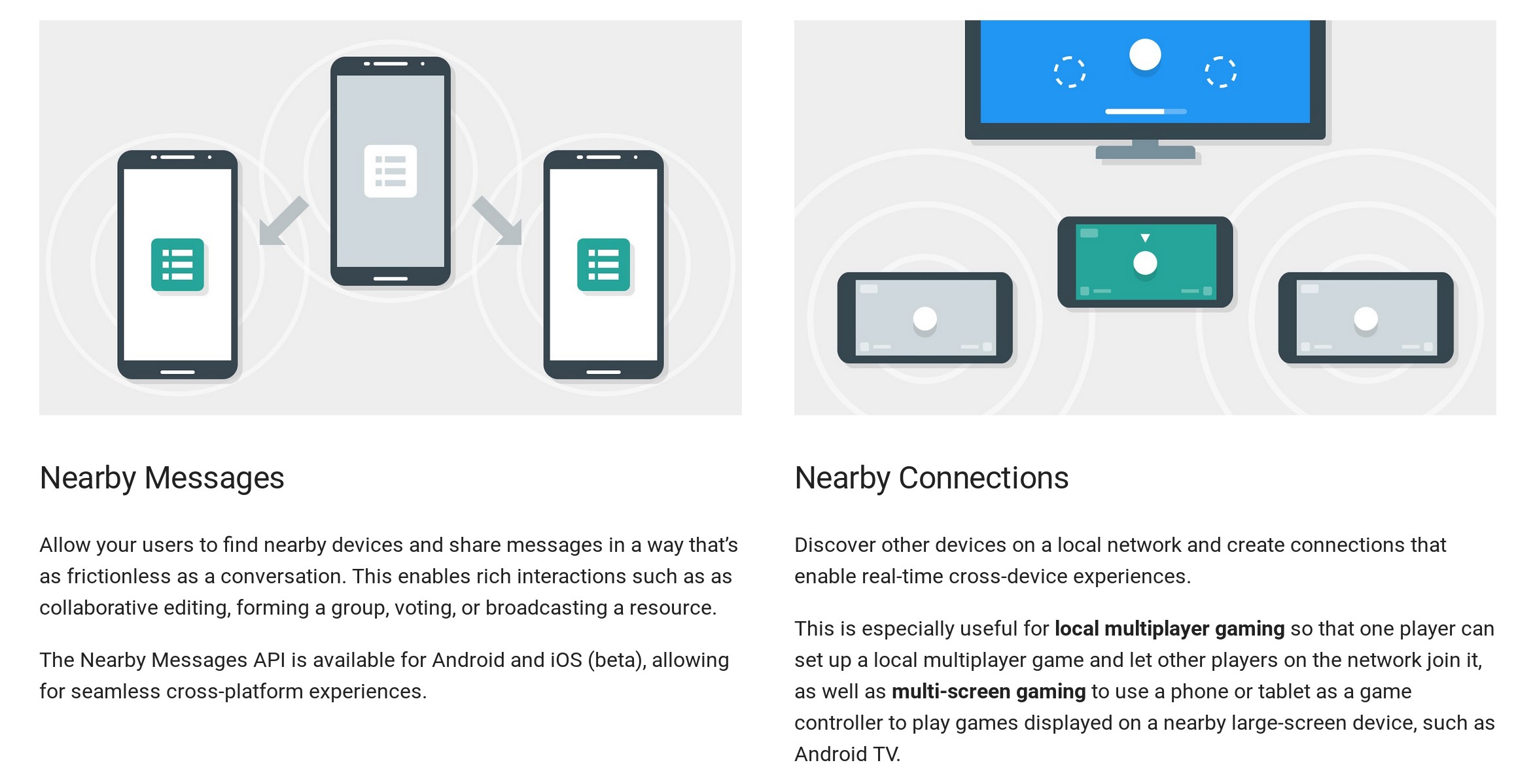After year of hype and leaks, Google Nearby is finally here. Nearby brings next big thing for app developers and smartphone users i.e. Location, Context awareness and vicinity.
Even though location and minimal context has been around for a while, it was never this powerful.
What is Google Nearby
Its a platform agnostic framework that allows users to share any information with nearby devices: Android or iOS. It is a new proximity API for iOS and Android. Devices–even older devices as far back as Gingerbread and the iPhone 4 can now find and talk to each other. This will unlock new types of interactions and turn interactions that used to be cumbersome, into single-touch transactions. This tech is already been underway with Google Play games for multi-player pairing, and on Chromecast. With this being now available to everyone with new Play services, the potential has been unlocked. I can’t wait to see what developers can do with this. Sharing info with people nearby was never so easy.
How Google Nearby Works
As per Google, it uses Wifi, Bluetooth (BLE Beacons), Audio (ultrasound audio through speakers & microphone) to discover other devices nearby. With Nearby API, all of this happens like magic in few lines of code via Google Play services 7.8+.
Open Source Beacons: Eddystone
Nearby supports Bluetooth beacons. These are cheap devices that can be installed at cafes, stores, home to take context awareness is ready to touch new level. Apple had released iBeacons last year but they were closed and limited to newer iOS devices only. Didn’t get much traction. Google has taken the battle further with Eddystone by making it Open source. By open sourcing Eddystone, Google has left beacon hardware, firmware, and the user experience up to other companies.
Eddystone is a protocol for open-source beacons, which could be produced by any manufacturer (Google already has a bunch lined up) for as little as $10, communicate with any Android or iOS smartphone, and be baked into almost anything. Bluetooth beacons are one-way communications, so usually the goal is triggering an event.
Contextual awareness relies on phones knowing where they are, and what they’re talking to. Currently, that relies on connecting to Wi-Fi networks, or an active GPS location — things that rely on you to take your phone out and do a thing, rather than having some nearby object alert you to something of interest.
But low-energy Bluetooth beacons have the potential to change all that: embed a Bluetooth beacon in a bus stop, and it can offer you the timetable when you stop there for ten seconds. Stick a beacon inside a restaurant, and it could offer you the menu on your phone when you walk in.
It’s all gonna get spiced up, if it catches traction.
More beacon reading at Ars.
loading...
loading...


